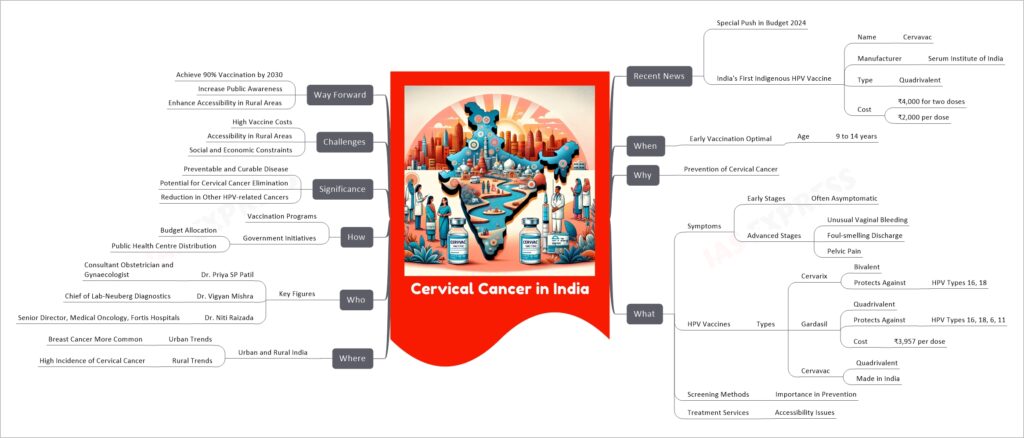Cervical Cancer in India

Cervical cancer in India is a critical health concern, currently receiving heightened attention due to the introduction of vaccination initiatives in the 2024 budget. The disease, once predominant among women, especially in rural areas, is now preventable and curable with early detection and vaccination. India has introduced its first indigenous HPV vaccine, Cervavac, developed by the Serum Institute of India. This quadrivalent vaccine is a proactive step towards reducing cervical cancer risk and is most effective when administered to young individuals between 9 to 14 years. Challenges remain in terms of vaccine accessibility and cost, particularly in rural areas. The government’s recent efforts aim to make the vaccine more accessible through public health centres, targeting a 90% vaccination rate by 2030. This approach not only addresses cervical cancer but also other HPV-related cancers, underscoring the significance of early intervention and widespread vaccination programs in India.
If you like this post, please share your feedback in the comments section below so that we will upload more posts like this.

